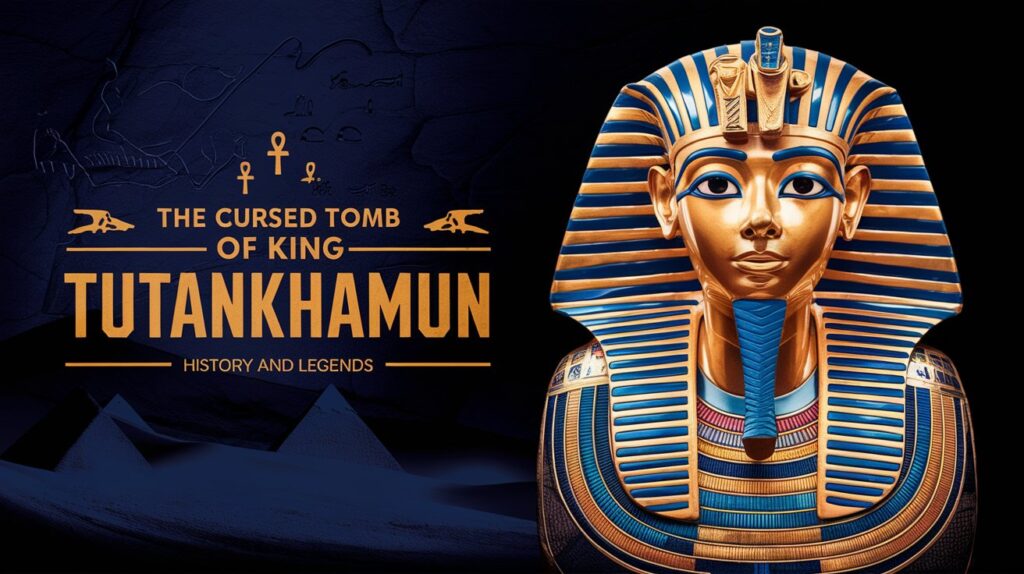The Cursed Tomb of King Tutankhamun

Introduction
The discovery of King Tutankhamun’s tomb in 1922 by British archaeologist Howard Carter marked one of the most significant archaeological finds of the 20th century. However, the excitement surrounding the tomb was soon overshadowed by tales of a curse that supposedly befell those involved in its excavation. This article delves into the history of King Tutankhamun's tomb, the legend of the curse, and the implications of both on popular culture.
The Discovery of the Tomb
In November 1922, Howard Carter uncovered the entrance to King Tutankhamun's tomb in the Valley of the Kings, Egypt. The tomb, designated KV62, was remarkably intact, filled with an array of treasures, including gold artifacts, jewelry, and the famous golden mask of the young pharaoh. This discovery provided invaluable insights into ancient Egyptian culture and burial practices.
Who Was King Tutankhamun?
King Tutankhamun ascended to the throne at a young age, around 9 years old, and ruled for approximately ten years before his untimely death around 1323 BCE. His reign was marked by a return to traditional polytheistic beliefs after the monotheistic rule of his predecessor, Akhenaten. Although Tutankhamun was not a particularly significant pharaoh during his lifetime, his tomb's treasures have since made him one of the most famous figures in ancient history.
The Legend of the Curse
The legend of the "Curse of the pharaohs" gained traction shortly after the tomb’s discovery. It was rumored that those who entered the tomb would suffer misfortune or death. This idea was fueled by the unexpected deaths of several individuals associated with the excavation, including Lord Carnarvon, the financial backer of the expedition, who died from an infected mosquito bite shortly after the tomb was opened.
Notable Deaths and Misfortunes
The deaths of Lord Carnarvon and others linked to the excavation sparked widespread media coverage, leading to sensationalized reports of a curse. Some notable incidents include:
- Lord Carnarvon: Died in April 1923, just months after the tomb was opened. His death, along with reports of a mysterious black cat that supposedly crossed his path before he died, intensified the curse narrative.
- George Jay Gould: An American financier who visited the tomb and died unexpectedly shortly thereafter.
- Arthur Mace: One of Carter's colleagues, who experienced a series of misfortunes, including health problems, after the tomb's discovery.
Debunking the Curse
Despite the allure of the curse, many researchers and historians have sought to debunk the myth. Various explanations have been proposed, including:
- Natural Causes: Many of the supposed curse-related deaths can be attributed to natural causes or existing health issues.
- Psychological Effects: The power of suggestion and media sensationalism may have contributed to the belief in a curse, causing anxiety and fear among those involved.
- Mold and Bacteria: Some suggest that the tomb's environment, rich in mold and bacteria, could have posed health risks to those who entered, potentially explaining some illnesses.
The Cultural Impact of the Curse
The idea of a curse surrounding King Tutankhamun's tomb has permeated popular culture, inspiring books, movies, and documentaries. The legend has sparked interest in Egyptology and the mysteries of ancient Egypt, captivating audiences worldwide. The tales of the curse contribute to the mystique of Tutankhamun and the allure of exploring the unknown.
Conclusion
The Cursed Tomb of King Tutankhamun represents a fascinating intersection of history, archaeology, and legend. While the tales of curses may be exaggerated, they have undeniably added to the intrigue surrounding this iconic pharaoh and his treasures. As scholars continue to study the tomb and its artifacts, the legacy of King Tutankhamun endures, reminding us of the rich and complex history of ancient Egypt.



Post Comment